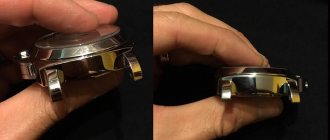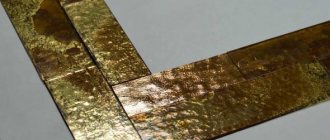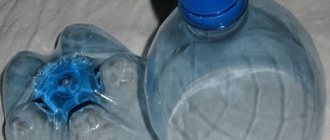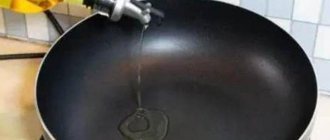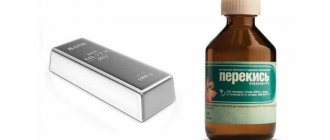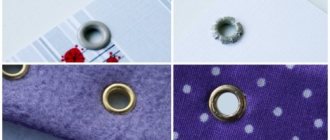Added by: Elena Aleshina March 21
Plexiglas is a material that has secured its position both in everyday life and in production. Its technical characteristics (strength, transparency, thermoplasticity) are not inferior to those of ordinary glass. The use of organic glass may require polishing. Is it possible to polish the material at home and how? What is involved in the preparation and processing process? Everything is not as complicated as it might seem at first glance.
- 2 Methods for polishing plexiglass at home
2.1 Using GOI paste, sandpaper and felt (with detailed video)
- 2.2 Home helpers (toothpaste, chalk and others) + video
- 2.3 Is it possible to polish it yourself using dichloroethane?
- 2.4 Other scratch remedies
How to polish plexiglass at home
Do-it-yourself products used to restore the surface of plexiglass:
- Paste GOI;
- Sandpaper;
- Polish;
- Dichloroethane;
- Toothpaste, wine vinegar, etc.;
- Burner;
- Mixtures;
- Home Remedies;
- Solvent vapors.
Paste GOI
The basis of GOI paste are chromium oxide particles. The softness of the paste is directly related to the size of the abrasive particles. The most commonly used paste is GOI number 2. Felt or woolen fabric is used as auxiliary materials. This method has gained the most popularity. It is produced in several stages.
Step-by-step algorithm for polishing plexiglass at home with GOI paste:
- Material separation. The treated area is separated from other elements using tape and other available means;
- Applying paste to fabric. To improve the quality of processing, it is recommended to apply a small amount of machine oil;
- Surface treatment. Processing is carried out with soft circular movements, without excessive pressure that can lead to melting of the material.
To speed up the process of polishing plexiglass from scratches, you can use a sharpening machine equipped with a felt disc. It must be taken into account that the operating speed of the machine should not exceed 1500 rpm. Paste treatment is suitable for cases where the damage is not deep. To treat severe damage, an initial roughing with sandpaper is recommended.
Polishing plexiglass with your own hands using sandpaper and GOI paste
For the preparatory stage of polishing plexiglass from scratches at home, sandpaper with a grit of 800 units is used. Before polishing, the surface to be treated is wetted with water. As a result of exposure, the plexiglass will acquire a matte surface. Grouting is carried out until a flat area is achieved. For the final stage of preparation, paper with a grain size of 2000 units is used. Throughout the entire treatment, the surface is wetted with water using a jet method or using a spray bottle. The prepared area is dried and polished with GOI paste, as indicated above.
Polishes
Most often, to polish plexiglass with your own hands at home, it is customary to use a car polish. The composition is applied to a soft cloth and rubbed in with soft circular movements until the result is achieved.
Dichloroethane
The essence of the process is the ability of dichloroethane to dissolve the top layer of the surface being treated. It should be borne in mind that applying the composition requires some skill, since excessive coating can make the material uneven. In addition, dichloroethane has a fairly high degree of toxicity and requires personal protection measures. It is advisable to apply dichloroethane using a spray bottle, which allows you to achieve the most uniform distribution of the chemical on the surface and avoid the presence of untreated areas.
Polishing plexiglass with toothpaste
Alternatives to toothpaste include tooth powder, baking soda, and baby powder. polishing plexiglass from scratches, toothpaste acts as a ready-made remedy, while other powders must first be prepared, giving them the consistency of a paste. For these purposes, ordinary water is used in a dilution of 2 to 1 for soda and approximately 1 to 1 for tooth powder. In general, the proportions are selected individually, depending on the size of the abrasive component of the substance used.
Burner
Polishing the surface of plexiglass with a flame requires certain skills. Otherwise, the risk of damaging the surface and creating a fire hazard exceeds the desired result. The essence of the method lies in melting the damaged plane and covering the scratches with the melted component. Using a torch is advisable for extruded acrylic. The surface of the cast material is susceptible to the formation of black spots, and therefore flame treatment is not safe. Most often, this type of processing is used when working with hard-to-reach surfaces, corners and sloping surfaces. In this case, a shiny surface can be achieved only by maintaining uniform heating.
Mixtures for polishing plexiglass
The most popular mixture for polishing plexiglass from scratches with your own hands is a mixture of wine vinegar and water in a 1:1 ratio. Only hot water is used to prepare the solution. This composition helps not only to get rid of minor scratches, but is also able to protect the product being processed from the formation of fungus and mold.
Homemade pasta
Industrial products such as Pemolux, Pemoxol, NEDE and Universal are suitable for preparation. The products are washed with running warm water. Upon completion of settling of the resulting liquid, the settled powder is dried and subsequently used as an abrasive paste. Upon completion of treatment, the surface is thoroughly washed and dried.
Solvent vapor
It is worth considering that steam treatment is recommended only in case of exposure to internal surfaces. The surface acquires either a matte or translucent color. Restoring transparency will require the use of machinery in this case.
Methods
Many people are interested in how to disguise scratches on the end of their favorite photo frame or update the walls of their favorite cabinet to transparency. The main nuances of the restoration of plexiglass itself will be quite simple - cleaning the surface, addressing scratches and, in most cases, polishing - consolidating the effect. Acrylic can be polished in several ways; polishing can also differ in the composition of the products used.
To remove damage from plexiglass and rub it until it becomes transparent, use the following products:
- GOI pastes;
- polish;
- dichloroethane;
- improvised household products, for example, toothpaste.
It is worth noting that the grinding and polishing process usually takes quite a long time and requires a lot of effort and accuracy.
To repair the damage and bring your favorite trinket back to life, you should try a little. All methods are suitable, all that remains is to choose an option based on the available materials, and only then determine whether it will be grinding or whether it will have to be polished with special store-bought compounds.
The most commonly used materials are:
- paper sheet;
- masking tape;
- polishing paste;
- coarse and fine-grained sandpaper;
- pure natural fabric;
- knife.
Felt and GOI paste
One of the most common methods is polishing using GOI paste and ordinary felt. Finding them at a hardware store won't be too difficult.
In case of deep damage, you will initially need to treat the surface of the glass with coarse-grained paper, then with fine-grained paper (you will get frosted glass), and only then polish it.
To remove minor scratches, the process involves applying paste to the treated surface of the glass and polishing it. Movements of the felt on the glass surface should be intense. The more active the movements, the faster the scratches will disappear.
Dichloroethane
Acrylic plastic can be restored using dichloroethane compounds. This composition is able to dissolve the top layer of glass, eliminating scratches. You need to spray it from a spray bottle and wait until it dries completely. This processing method is suitable for small areas of plexiglass, and it also requires good experience and skill.
Other options
“Home methods” are in wide demand for leveling the surface of carbon glass at home.
- You can achieve good results with toothpaste Ordinary chalk is also suitable for this purpose. To polish glass with your own hands at home, craftsmen apply substances to the surface and polish with a soft cloth or felt. Once the result is achieved, rinse the glass with water.
- Automotive polishes can also renew an old plexiglass item. Choose colorless formulations.
Initially, it is better to try the effect of the product on an inconspicuous area, such as a side cut of glass or a place in a corner.
If the result is successful, the automotive product is applied to a larger surface of the plexiglass and rubbed with a soft cloth when a positive result is achieved.
- Burning with a torch is also used as a possible type of processing. But it already requires a lot of experience in this field of activity, as it usually leads to damage to the product for beginners (from burning the surface to a fire).
- A 1:1 mixture of wine vinegar and hot water can also help in getting glass smooth. At the same time, such treatment will help protect against all kinds of fungal formations and mold stains.
- Coarse abrasive powder is an excellent substitute for grainy paper. Pumice, chalk, crocus, chromium and aluminum oxide are added for abrasive dry grinding. They add wax (beeswax), paraffin, machine or vaseline oil.
- There is a recipe for making your own pasta. In household The store buys “Slava”, “Universal”, “NEDE” or “Pemoxol” pastes. The composition is washed well with running warm water, the liquid is settled, and the resulting precipitate is dried. During polishing work the paste becomes soft. At the end of the process, the glass is washed well with water and soap.
When is polishing needed?
The need for polishing may arise in two cases: after long use or processing. Cutting often leaves tools with rough edges, chips and small cracks. In order not to harm the appearance of the panel, you need to perform polishing work. Then you will be able to avoid the problem of tarnishing and distortion of the glass surface.
Advice! You can stick a colored film on the product. This will add aesthetic appearance and strength to it.
How to make plexiglass transparent?
Plexiglas is a universal synthetic material, which, due to its high wear resistance, strength and attractive appearance, is widely used in the interior of residential and industrial premises, for the manufacture of various attributes and accessories. As a result of long-term use, mechanical and other negative effects on the material, the surface of plastic products loses its original aesthetically attractive appearance - it becomes cloudy, the background is distorted, scratches and loss of shine are noticed. Let's look at several effective ways to clean plexiglass at home.
Related services
- Choose …
View
Cutting polycarbonate and acrylic pipes
100 ₽ – 650 ₽
- Choose …
View
Cutting plexiglass rods
150 ₽ – 280 ₽
- Choose …
View
Polishing polycarbonate and acrylic pipes
210 ₽ – 1500 ₽
- Choose …
View
Polishing acrylic rods
240 ₽ – 600 ₽
Glass with frosted surface
An interesting design element would be the use of a matte plexiglass surface. Thanks to its ability to diffuse light, many lighting designers have successfully used it in lamps and night lights. If you are planning to create a comfortable sconce lamp for the bedroom or a night light with dim diffused light with your own hands, then you will need to watch a video on how to make the polymer matte.
How to make frosted plexiglass at home? Very simple. Take medium-grit sandpaper and start sanding the surface until it becomes matte. If you have the desire and opportunity, you can also treat the surface on the other side.
If you don’t like this option, then you can opt for chemical treatment of the surface - etching it with an acid solution, which is not very desirable for an apartment. But there will be no need to use physical force. Still, it is better to carry out processes using chemical compounds outside.
You will need a special cuvette into which our material must be loaded entirely. Fill the container with formic acid and immerse the plexiglass in it. After keeping it in the solution for about an hour, remove it carefully and rinse under running water. For such a procedure, it is better to take all precautions: glasses, mask, gloves. You should end up with matte white plexiglass, from which you can easily create a night light or lamp to your liking.
General recommendations
First of all, it is necessary to ensure the safety of polishing plexiglass. During processing, attention should be paid to the following points:
- Spraying dichloroethane should be carried out with protected respiratory tracts: you need to wear a medical mask or respirator.
- The room in which work with chemicals is carried out must be constantly ventilated to avoid the concentration of harmful substances in the air.
- Before starting to work with a power tool, you must ensure that it is in good working order, as well as the integrity of the power cable and the electrical network of the work area.
- When working with sandpaper or a sander, you should protect your eyes with goggles, as dust or small fragments may get into them.
- For work, you need to use protective gloves made of durable material to protect the skin of your hands from contact with chemicals and hard fragments. You need to select gloves according to the size so that excess fabric does not get into the tool and interfere with manual work.
How to polish plexiglass
Organic glass is a thermoplastic material known for its impeccable quality. It has a high level of transparency and is significantly superior to ordinary glass; it freely transmits light rays without any distortion, clouding or other defects. Plexiglas is widely used in the production of all kinds of display cases, partitions, special viewing windows, accessories for cars, telescopes, lamps, microscopes, and medicine, construction, industry and many other industries cannot do without it. However, with all its advantages, in order for it to last for quite a long time, it requires conscientious care. Next, we’ll look at how to polish plexiglass, but we also recommend that you familiarize yourself with the material for gluing plexiglass.
Plastic polishing techniques
At home, when starting to polish a plastic product, you need to mentally scroll through the plan and stages of the upcoming work. You also need to check the availability of the necessary tools and consumables. After determining the amount of work to be done, the most suitable method is selected. This event is conventionally divided into 3 types:
- thermal - exposure to temperature using a hairdryer;
- chemical method - GOI paste, polish, toothpaste and the like;
- mechanical - with a polishing machine or drill.
The first stage of plastic polishing involves assessing the damage caused to the product. Based on the severity of the damage, a suitable method is determined. In case of light scratches, it is recommended to remove the damage manually using sandpaper. It is better to remove scratches of medium depth using the thermal method. In order for transparent plastic, which belongs to optical products, to return its original light transmission, a chemical method is used.
The second stage is preparing the plastic product for processing. Plastic is washed with dishwashing or glass detergents. This is necessary to remove the top layer of accumulated dirt and remove surface fats. After preliminary cleaning and drying, the product is treated with acetone or a similar product to completely degrease.
When the polished plastic is framed by other materials, such elements are removed (when they are mounted) or covered with masking tape to prevent them from being damaged during operation.
Application of polishing machine
A polishing machine is a professional tool that helps restore the original gloss to the fullest extent. Working with a polishing machine is convenient and easy; this tool is recommended for car owners who need to periodically restore the light transmission of headlight glasses and other plastic surfaces. The main advantage of a polishing machine is the speed of work - in 5-7 minutes you can complete a volume of work that would take 2-3 hours manually. But, when working with such a tool, a number of conditions must be observed:
- Before using specialized compounds, remove residual stubborn dirt that was not previously removed using degreasing compounds. This is done using a wet nozzle.
- When the surface is almost polished, use 1 of the purchased pastes.
- To restore glossy plastic, the product is treated using a foam nozzle.
Polishing takes up to 20-30 minutes. Buying a polishing machine makes sense for people who periodically restore plastic and remove scratches from plastic surfaces. The price of a polishing machine is low and it is sold in construction stores and points that sell power tools. But, you shouldn’t buy a device when you only need to polish one specific thing.
Polishing plastic surfaces with a grinding wheel
To polish plastics, grinding wheels are often used, which are mounted on machines of the appropriate orientation or in the head of a drill. The mode and speed of rotation are determined depending on the type of plastic - plexiglass or others. But, you need to look at the state standard for the hardness of consumables - electrocorundum wheels with a grain size of 25 to 50, carbide tapes according to the standard 2.5-3, felt, felt, cotton and woolen fabrics.
Problems that may arise during polishing
On motorcycle forums you can find various tips on how to wipe the visor of a helmet so that it is shiny and transparent. But there is less enthusiasm about polishing, because there are a lot of unsuccessful examples of experiments when “proper care” ended in throwing the visor in the trash. Many people write about such problems:
- polishing changes the thickness of the glass, making it uneven, which leads to distortions and glare, like in a crooked mirror;
- polishing along with scratches removes the anti-scratch coating that all glasses have, and they become damaged again very quickly;
- It doesn’t matter what you use to clean your helmet visor – all methods only lead to clouding of the glass or plastic.
But besides pessimism, there are also optimists on the forums who are ready to happily share the secrets of polishing this demanding, but so important for a motorcyclist, component. So, let's reveal the secret of how to polish a helmet visor at home?
Polishing technology
Let’s immediately say what you will need for work:
- Drill up to 3000 rpm.
- Vise or enthusiast assistant.
- Felt drill polishing wheel.
- Paste GOI.
The algorithm of actions is as follows: you need to clamp the drill in a vice or give it to the safe hands of a partner, then spread GOI paste on a felt circle and fix it in the drill. The visor must be held firmly with both hands and moved from edge to edge in a rotating circle. The procedure takes 1.5-2 hours. It is advisable to clean the glass every 20 minutes. It is important to choose the right way to wash your helmet visor. It is enough to use ordinary soapy water and renew the paste on the wheel.
This polishing method has several nuances:
- you need to constantly move the visor without stopping at one point, as a cloudy spot may remain;
- the glass should contact only one edge of the polishing wheel, since if it comes into contact with its center, the force of rotation will knock the visor out of your hands, and it will be scratched even more, if not broken at all;
- The grinder cannot be used for this purpose; it will leave melted spots.
Using sandpaper: is it worth it?
There are other logical tips online on how to polish your visor. For example, sandpaper, like car headlights. Depending on the degree of damage to the glass, a cloth of different grain size is taken: 1000-2500 grit. In general, they are used in combination, treating the surface with each paper in turn until the surface becomes matte. Next, the glass is coated with special pastes and rubbed with a foam pad. The final stage is final polishing. To do this, it is better to use a soft microfiber or velvet cloth to remove traces of processing and paste residues.
We hope we helped you figure out how to clean your visor and whether it’s worth polishing it at home. In any case, it is better to experiment for yourself before throwing away the scratched glass and buying a new one. Although no amount of polishing will permanently protect the surface from scratches, sooner or later the glass will wear down to the minimum limit and the motorcyclist will have to buy a new one.
Polishing with GOI paste
paste GOI
GOI paste was created by Soviet scientists at the State Optical Institute. Its level of softness depends on the size of the abrasive particles of chromium oxide powder, which is the basis of the polishing paste. If there are no significant and deep defects on the surface of the acrylic product, then achieving perfect smoothness with its help will not be difficult.
To polish plexiglass you will need GOI paste No. 2 and felt or woolen cloth. It is necessary to generously treat a piece of woolen fabric with the paste, then polish the glass with it until it shines with soft and even movements. To make polishing easier, you can add a few drops of machine oil to the fabric. There should also be moderation in pressure and pace of movements so that the surface does not begin to melt during processing.
polishing set: GOI paste No. 2, felt (wool fabric)
You can do the same procedure with a sharpening machine using a felt disc. The speed of such processing should not exceed 1500 rpm. The paste is not applied directly to plexiglass, this can only cause harm. GOI paste contains toxic compounds, so you should take care of safety by protecting your respiratory tract and eyes.
Recommendations
The following recommendations should be followed:
- any work with plexiglass should be carried out with minimal pressure so as not to break the product;
- before starting work, the glass should be washed with water and dried without using heating devices; It would be ideal to be able to detach the organic glass from other surfaces, but if this is not possible, then seal them with tape;
- When processing with sandpaper, it is recommended to periodically moisten the glass surface with plain water;
- when felt is missing, it can be replaced with a regular felt insole;
- a polishing wheel will make the polishing job much easier, and grinding machines are also an excellent choice; but when using the technique, you should remember that the rotation speed should not be at maximum - this will help avoid damage to the glass surface;
- after using car cosmetics, the glass can be wiped with vegetable oil;
- Do not forget about the protection of the master - use safety glasses when polishing and grinding;
- when using chemicals, it will be necessary to ventilate the room well; if even mild dizziness occurs, you should immediately stop working and go out into fresh air;
- the use of fire must be very careful;
- a respirator will help protect your respiratory organs from dust, but if you don’t have one, you can try replacing it with a medical mask or scarf;
- gloves will help protect the skin of your hands from dust and other small powders that can get on the skin and cause allergies;
- When grinding glass with deep scratches, you should start with coarse-grain paper, and as the top layer wears off, replace it with a finer one; after this, the surface will become matte, but if the difference is visible, then the less transparent areas of the glass should be additionally sanded until the same result is obtained;
- the grinding process should periodically be replaced by the process of cleaning the resulting dust;
- GOI paste should not contain ammonia, since it can make the glass dull;
- when polishing using technology, you need to know that thermoplastics require up to 1.5 thousand revolutions per minute, and thermosetting compounds - up to 2 thousand; thermoplastic glass compositions should be treated with softer polishing components compared to thermosetting ones;
- It is better to treat corrugated organic glass with chemical steam, since grinding and further polishing will not bring results;
- Steam polishing is not suitable for transparent glass, unless the goal is to make it matte;
- using GOI paste with aluminum in its composition will give color to transparent glass, and chromium oxide will penetrate into the damaged surface and most likely will remain there; it will be very difficult to remove it;
- chemical matting or sanding with fine-grained paper is suitable for obtaining a matte surface.
It is always possible to polish the glass at a car service; for some, it will even be much easier to simply replace it. But this method will require more extensive financial costs. In the case of your favorite things, it will be inappropriate to talk about replacement, so choose a method that is more convenient for you and restore your dear things yourself. The proposed methods of influence will help you achieve good results.
You can get acquainted with the technology of polishing plexiglass in the following video.
Other products for polishing plexiglass products
You can also make plexiglass shine using toothpaste, chalk dust or car polish. If you can’t polish the product yourself, you can contact a specialist who, using professional equipment, will do it quickly, efficiently and reliably.
Caring for plexiglass is not difficult. The use of products containing abrasives, ammonia, high concentration ethyl alcohol and other solvents is excluded. It is necessary to use soft natural fabrics soaked in warm water or weak alkaline solutions. Thanks to polishing and proper care, you can not only restore the original transparency, but also extend the life of organic glass products.
Distinctive features of plexiglass
Among the key features of the material are softness and lightness. They are achieved due to the fact that plexiglass is made from acrylic paste using chemical reactions. Externally, it is practically no different from ordinary glass.
Important! The material also has the following names: carbon glass, acrylic paste or plexiglass.
Organic glass can be easily transformed, can be processed and has high throughput rates. But it is worth considering that some chemicals can lead to the decomposition of the material.
How to remove scratches from plexiglass
Fine sandpaper or polishing agents will help get rid of scratches on the surface of plexiglass. In the first case, use sandpaper to carefully and evenly remove the layer with scratches. In the second, use GOI paste or colorless car polish.
You need to polish the glass using a felt cloth. After treatment, wipe the surface with sunflower oil. By the way, you can clean plexiglass from scratches and clouding at a car service center, where experts will perform both polishing and grinding. And if there are a large number of scratches and defects, it is sometimes easier to replace the damaged plexiglass with a new one.
Grinding is not suitable for processing optical glasses, which are used in glasses and other similar products. After such procedures, distortions may occur, which will negatively affect vision.
To get rid of scratches on glasses lenses, use a computer or equipment screen cleaning spray, a baking soda solution or non-abrasive toothpaste, car wax or car glass cleaner, or a polish for wooden furniture or silver.
How to clean cloudy polycarbonate?
Clean polycarbonate carefully using warm water with a few drops of liquid detergent and a microfiber cloth
. Fill the bucket with plenty of water so you can rinse the fabric more often. This will prevent dirt and scratches from appearing on the polycarbonate.
Interesting materials:
What is DCIM on your phone? What is DSN on my phone? What is phone phantom mapping? What is FDN in Samsung phone? What are filters on an Android phone? What is Google Assistant on your phone? What is a GSM unlocked phone? What is pocket mode on a mobile phone? What is a memory card in a phone? What is cached data on Android phone?
Features and application of plexiglass
Organic glass (PMMA, acrylic, acrylic glass, plastic*) is a synthetic polymer that contains a thermoplastic resin, which gives the material unique properties. Due to its incredible strength, transparency, ability to transmit and scatter UV rays, resistance to aggressive chemical liquids and other advantages, the material is widely used:
- to create equipment for workers working in various industrial fields - safety glasses, masks, etc.;
- as “glazing” of openings of buildings and structures, during the construction of domes, during the redevelopment of premises (as partitions);
- in production - shower cabins, lighting fixtures, aquariums and other decorative elements;
- in the interiors of apartments or office premises, etc.
Plastic looks great in any form, acting as an excellent analogue of glass with a more impressive range of positive qualities. However, the material is not protected from the appearance of flaws on the surface, which can significantly spoil the appearance of any product. You can extend the service life of plastic if you properly care for it and follow useful tips on how to clean plexiglass until transparent with your own hands.
How to restore transparency to plexiglass? Step-by-step instruction
If it is necessary to thoroughly clean the plexiglass from plaque, traces of paint or deep scratches, it must be removed from the frame structure. If it is not possible to remove the plexiglass, it is important to cover the adjacent areas with regular or masking tape to protect the product made of metal, wood and other materials from negative consequences. So, how to make cloudy plexiglass transparent:
- Using sandpaper (2000 grit), the surface is evenly rubbed with light circular movements until a uniform matte texture is obtained. During cleaning, it is important to regularly rinse the product under running water or moisten it with water from a spray bottle or spray bottle.
- Next, any remaining moisture is removed from the part, the plastic is wiped dry, and then polished with a soft cloth and a paste (GOI or analogues) is applied.
- Some people, after polishing the plastic, treat it with sunflower oil, making it more sparkling and glossy.
Despite the scale and severity of the damage and the chosen method of cleaning plexiglass, the algorithm of actions is always identical.
